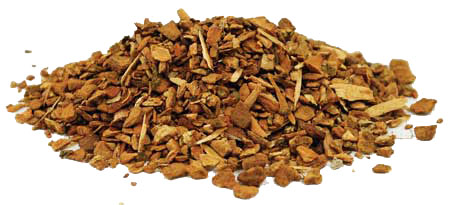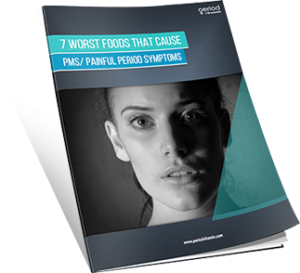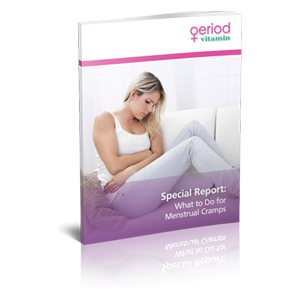Do you suffer from menstrual cramping as millions of women everywhere do? Have you ever tried cramp bark for menstrual cramp relief? No? Maybe you have heard of cramp bark and have wondered does cramp bark help for menstrual cramps?  How does it help with this pms symptom?
How does it help with this pms symptom?
Let’s look at how cramp bark might help with period pain relief, why it works and how and when to take it.
What is the appropriate and recommended dosage needed to get the most benefit from cramp bark?
Viburnum opulus is the official name for cramp bark. It is known to have a medicinal effect on the abdominal pain, back pain and thigh pain caused by menstrual cramping.
Most women experience cramping during the first three stages of the menstrual cycle due to pms (PreMenstrual Syndrome). These menstrual cramps can be so bad that they cause a woman to be bed ridden for a day or a week. Many women lose productive work hours every month due to pms caused cramps. If cramp bark can alleviate these cramps it would certainly be worth trying.
First it is good to understand why a woman has menstrual cramps to begin with so that we can understand how and why cramp bark is effective against them. Here are the stages of the menstrual cycle and when cramping is most common and most prevalent.
MENSTRUAL CYCLE STAGES
 Premenstrual Stage: This is the stage of a week or two before the period of bleeding starts. In this stage pms begins and runs rampant through the next two stages as well. In this stage bloating and fluid retention can begin along with cramping. Cramping can be caused by the bloating as well as by uterine and pelvic spasms. During this stage the body is being prepared for the follicular and luteal stages of the menstrual cycle.
Premenstrual Stage: This is the stage of a week or two before the period of bleeding starts. In this stage pms begins and runs rampant through the next two stages as well. In this stage bloating and fluid retention can begin along with cramping. Cramping can be caused by the bloating as well as by uterine and pelvic spasms. During this stage the body is being prepared for the follicular and luteal stages of the menstrual cycle.
Follicular Stage: This is the real beginning of the menstrual cycle but still a culprit of pms. In this stage the body prepares for ovulation and egg fertilization by flooding the body with estrogen and building up the lining of the uterus so that it is ready to accept the eggs. In this stage the eggs also make their way to the fallopian tubes to be ready for fertilization. There is extensive bloat, fluid retention and cramps in this stage. The estrogen that is flooding the system in this stage causes the production of prostaglandins that cause inflammation and adds to the cramping and pain of the menstrual cycle.
Luteal Stage: Ovulation begins this stage and the eggs move into position to be fertilized and embedded into the walls of the uterus. In this stage the flood of estrogen is replaced by a flood of progesterone. This causes a massive hormonal imbalance that is the cause of almost all pms symptoms. There is less cramping in this stage for some women as the bloating and fluid retention stop increasing. However all the bloat can cause excess pressure on the uterus and pelvis causing some of the cramping. There are also spasms of the uterus and pelvis adding to the cramps as well. This is also the stage where fertilization takes place if it is going to.
Period (menses/bleeding) Stage: In this stage of bleeding the excess uterine lining, excess blood, and unfertilized eggs are flushed from the body. This stage should relieve most of the cramping for most women but it might take several days for some women. The body then prepares to begin the cycle over again.
Post Menstrual Stage: For many women this is a period of rest and refreshing before the pre menstrual stage begins again. However many, many women experience some of the very same premenstrual syndrome during the post menstrual stage.
So how can cramp bark assist in preventing or alleviating menstrual cramps and pms symptoms ?
Cramp bark is just one of many herbal medicines and remedies for pms cramps. Cramp bark or Viburnum opulus goes by many other names some of which are Gaitre Berries, Red Elder, Guelder Rose, Dog Rowan Tree, Highbush Cranberry, Silver Bells, Snowball bush, Whitsun Bosses, Water Elder and May Rose. Cramp bark comes from the Caprifoliaceae family of plants and is found in the east of the United States, Europe, northern Asia and northern Africa.
Cramp bark was used extensively by North American natives and they used it for a diuretic and in this function it could help with eliminating the fluid retention caused by pms that adds to cramping. The Iroquis were said to use it as well in the diuretic function. Then in the 19th century, the Eclectic medicine movement used it for period pain, miscarriages and as a diuretic. What is important about its use by this medical group is their discovery that cramp bark was a strong anti-spasmodic and therefore it could calm the spasms and seizures of the uterus during pms.
In 1894, the US Pharmacopeia added cramp bark as an official botanical for period pain and fluid retention. The National Formulary included it in 1916. So you can see that it has long been accepted as an anti-spasmodic and a diuretic. Because of its anti-spasmodic effects it is used primarily to treat menstrual cramps. It can cause the uterus to relax and it also is an astringent that can slow down excessive bleeding or a heavier than normal menstrual flow. It also can be used to control menorrhagia – a condition of heavy, excessive bleeding – that some women suffer from.
Cramp bark is known to contain yiopudial – a chemical that is thought to create the cramp relief. It is seen as a sedative for the uterus and in additions to being used for pms and menstrual cramping, it is also effective for post-partum spasms and pain. It also prevents postpartum hemorrhaging.
There are very few human clinical studies to test the efficacy and effectiveness of cramp bark. There have been some animal studies that show it does indeed reduce or stop uterine spasms. “Interestingly, a laboratory study found that viopudial isolated from Viburnum opulus had antispasmodic effects on smooth muscle. However, there is currently insufficient available evidence in humans to support the use of cramp bark for any indication.” drugs.com/npc/crampbark
Most uses of cramp bark call for making a tea or a cramp bark tincture as the red berries that grow on the plant are actually poisonous. It is the bark you want to use and it has a bitter taste and strong smell. However the red berries are very high in vitamin C, they cannot just be eaten.
So what is the recommended dosage for using the bark itself and how do you prepare the cramp bark tincture?
According to a University of Maryland Medical Center study the mixture should be two teaspoons of dried cramp bark in a cup of boiled water and steep 13-15 minutes. Drink this mixture up to three times every day. livestrong.com
Others recommend 3-4 grams of cramp bark daily. Take 2 to 3 teaspoons of cramp bark in a cup of boiled water and steep it for up to 15 minutes to make a great tasting tea. This is also recommended to drink 2 to 3 times per day the week before your period or even two weeks before. This will also act as a diuretic so if you already take one, ask your doctor before you use this cramp bark tea.
So what if you find the tea distasteful or you cannot find any dried or raw cramp bark in your area? Well there is another answer and it may be more beneficial than the tea. This would be a supplement with cramp bark as one of its components. A combination of vitamins and minerals mixed cramp bark is actually the easiest way to take it.
 Because a combination is the best way to take cramp bark and because having the right additional vitamins and minerals, all in the right dosages, a tablet like Period Vitamin is recommended.
Because a combination is the best way to take cramp bark and because having the right additional vitamins and minerals, all in the right dosages, a tablet like Period Vitamin is recommended.
Why do we recommend Period vitamin? It is filled with a variety of herbs, vitamins and minerals that are selected specifically to treat the problems of the menstrual cycle and pms.
Period Vitamin contains along with Cramp Bark, Chasteberry, Cranberry, Black Cohosh, White Willow Bark, Red Raspberry, Calcium, Magnesium and Vitamin B Complex. Along with Magnesium and a few other vitamins and minerals this compound is one of the very best remedies available for menstrual cramps.
Period Vitamin contains the anti-inflammatory agents and natural analgesics that are needed to combat period cramping and pain. Niacin – one of the Vitamins in the B complex – and White Willow Bark are especially effective and have been used by people as homeopathic remedies for many centuries.
So you can see how Cramp Bark can be an effective agent for treating pms caused pain and you can see that it works better if it is combined in the right dosage with other vitamins, herbs and minerals. This will give you the best possible result and the most relief.



